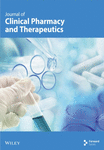Effect of cardiopulmonary bypass on the plasma concentrations of fentanyl and alcuronium
Abstract
This study was conducted to examine the effect of cardiopulmonary bypass surgery on the total and unbound plasma concentrations of fentanyl and the total plasma concentrations of alcuronium. Total fentanyl concentrations were measured by gas chromatography, the plasma protein binding of fentanyl by ultrafiltration, and alcuronium concentrations by high-performance liquid chromatography. Sixteen patients were studied.
On initiation of cardiopulmonary bypass (CPB), there were mean decreases of 58·8±7·1% and 47±3·2% for total concentrations of fentanyl in plasma and haemoglobin in blood, respectively. The magnitude of these reductions in individual patients was significantly related (Spearman |gr=0·65, P<0·05). The unbound fraction of fentanyl rose from 0·23 to 0·34 after the start of CPB. The total fentanyl concentration remained relatively stable during bypass until near the end of CPB when the mean total concentration increased, coinciding with rewarming. The size of the increase was related to the body mass index (BMI) of the patient (Spearman |gr=0·85, P<0·01). The estimated elimination half-life of fentanyl using the grouped data was 4·7 h.
The total alcuronium concentration in plasma fell by 29% on initiation of CPB and there was no increase on rewarming. The estimated elimination half-life of alcuronium using the grouped data was 234 min.
Despite marked declines in the plasma concentrations of both drugs on initiation of CPB, suitable levels of anaesthesia were maintained throughout the procedure.




